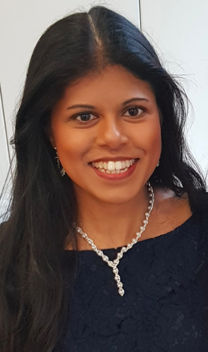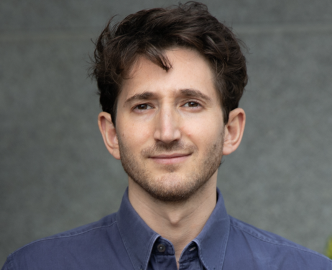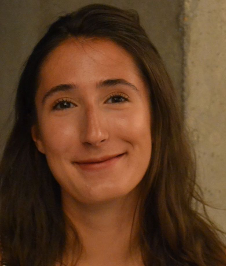As trainee doctors at a London hospital, we saw some of the earliest cases of COVID-19 in the UK. Within weeks, a new rota was created to face the pandemic and doctors from various departments were reassigned to help on the front lines.
As the crisis unfolded, one key issue that emerged was the impact on patient experience and that of their families. Only in a limited set of circumstances (e.g. end of life care) were inpatients allowed visitors, and in many hospitals, this remains the case. Families and carers often struggled to get hold of the right member of staff. Families expressed their frustration both to the Patient Advocacy and Liaison Service (PALS) team and informally. An additional challenge was the pace of discovery. New evidence and information about COVID-19 was emerging rapidly, resulting in frequent changes in advice and treatment. The ensuing uncertainty caused anxiety for staff, patients and their next of kin.
Working together as a multidisciplinary team, we embarked upon trying to address these problems through distributed leadership. As communication emerged as a key issue we encouraged a range of staff (medical students, managers, administrators) to work as “family communicators”. They were tasked with delivering routine telephone updates to next of kin and facilitating video calls for inpatients, including providing access to smartphones or tablets where needed. The frequency of family updates was closely monitored, with wards using handover boards and lists for the communicators.
This distributed leadership was made feasible by the pandemic, which led to the right conditions for this innovation and allowed all members of the team to join in1. The quick implementation of the new role was possible only in this context and the urgency of the problem allowed for greater involvement and leadership roles for us as junior members of staff2. We had rapid, enthusiastic buy-in and support from managers and senior leadership, which empowered us to innovate.
Medical students became meaningfully involved in patient care for the first time. Telephone skills are not routinely taught in medical education, instead these skills are often acquired with experience. When students encountered difficulties, we were able to provide support and to encourage our colleagues to do the same. Other members of the team organised training prior to starting the role. Thus, we were able to share tips and provide feedback to the communicators.
Throughout the crisis response, there were virtual meetings with managers in order to develop the project, including creating patient and family information leaflets about the disease and inpatient care. Working on the frontline has helped us to feedback back to senior management. In order to obtain and capture formal feedback, we designed surveys for all stakeholders; staff, family members and patients. Initial surveys responses suggested that family members found the communicators beneficial and these interactions helped alleviate their worries.
“I looked forward to these as a highlight of the week, when there was time to talk and not feel rushed, and not to battle to make contact.” (Anonymous feedback from a family member via an online survey)
Medical students reported increased confidence but found their role was often misunderstood. Staff expressed concerns around communicators being put in situations beyond their level of competence but agreed they were useful for routine updates. In order to address this mismatch, we reiterated the intended role of the communicators at the handover meetings for all medical juniors.
“Not only do medical students gain important experience, but they are contributing to the overall experiences of the patient and their relatives back home. This has allowed some pressure and burden to be taken away from the medical staff.” (Anonymous staff feedback from an online survey)
Junior doctors often face barriers limiting them from leading meaningful projects. These may include a lack of confidence or knowledge as well as systemic factors such as red tape preventing timely changes, lack of support from senior leadership and turnovers in staffing. There were numerous issues to deal with in this scenario. Turnovers in staffing made it harder to execute and record the interventions due to team restructuring and rota changes. Secondly, as we emerged from the COVID-19 peak in May/June, some medical students were unable to continue in the role and administrators returned to normal duties. However, there was no relaxation in visitation rules. This limited the numbers of communicators available. Medical teams shifted back to more normal structures, resulting in breakdown of the new communication channels.
Nevertheless, there is a lot from this experience that can be taken forward. Both students and administrators experienced increased involvement in patient care and their learning will inform how they perform in other areas. The pandemic has seen an increased use of telemedicine. Medical schools are redesigning their curriculums for this new era. If students continue to become involved as family communicators, this would allow students to develop these important skills and gain experience prior to qualifying. Additionally, relatives have expressed that regular video calls would be of great benefit even after the pandemic has resolved.
The lessons from this experience are applicable beyond the confines of this project. It is imperative that we think differently about how to disseminate information and inspire transformation across boundaries and silos without the face to face meetings we are accustomed to. Improving and redesigning services during a pandemic, where working patterns and clinical pathways are highly dynamic, is uniquely challenging and requires adaptive leadership approaches.
Our experience of the successes and challenges of leading change and innovation in this setting have been valuable. Working in a pandemic has empowered us to embrace our ideas and work together with management and allied healthcare professionals to affect change in a rapidly changing situation.
References
- Wiedner,R et al. Improvisation during a crisis: hidden innovation in healthcare systems. BMJ Leader, 2020, 0:1-4. doi:10.1136/ leader-2020-000259
- Stoller JK. Reflections on leadership in the time of COVID-19. BMJ Leader 2020;4:77– doi:10.1136/leader-2020-000244

Dr. Lauren Hookham
Dr. Lauren Hookham has just completed core medical training in London. She is interested in global health, infectious diseases and medical education. Twitter handle @lauren_hookham

Dr Agalya Ramanathan
Dr Agalya Ramanathan is an academic GP registrar working in North London. She is interested in medical education, end of life care and chronic disease management. Twitter handle @AgalyaRamanath1

Dr. Joel Schamroth
Dr. Joel Schamroth is a doctor working in London as a medical registrar having recently completed core medical training. He is interested in digital health, health systems innovation and infectious disease. LinkedIn: https://www.linkedin.com/in/joel-schamroth-30a23b151/

Chantal Rees
Chantal Rees is a final year medical student at the University of Sheffield. She is interested in Global and Public Health and is looking forward to applying her learning from this project to her clinical practice as a foundation doctor.
Declaration of interests
We have read and understood the BMJ Group policy on declaration of interests and declare the following interests: none.